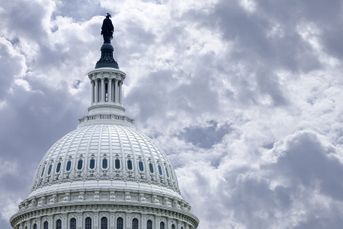Our best tool against the DOL fiduciary rule is data
We must ensure that regulators and the public hear detailed, quantitative information.
As an advocacy organization, one of our most powerful tools in the ongoing effort to oppose the onerous Department of Labor (DOL) fiduciary rule is to ensure that regulators, lawmakers and the public hear detailed, quantitative information on the subject from as many voices as possible. After all, as they say in Washington, D.C., “The plural of ‘anecdote’ is not ‘data’.”
We have worked extensively with Oxford Economics throughout this process to develop data-driven perspectives on the fiduciary rule to help inform the continuing debate. The latest survey we commissioned – completed in July – shows clearly that drastic reductions in product choice for investors and skyrocketing costs are not simply happening at one or two firms. They are happening across the entire industry – and they are happening today.
Meanwhile, the cost of compliance with the rule is now projected to exceed the DOL’s estimates by several multiples. And while firms have begun to develop market-driven solutions that would achieve many of the rule’s objectives by more effective means, the current timeline for implementation will most likely prevent them from properly developing and testing these solutions.
This latest Oxford Economics study serves to bolster and expand on the comments made by 1st Global President and FSI Board Member David Knoch on FSI’s behalf before the House Financial Services subcommittee on Capital Markets, Securities and Investment in July.
During that hearing, David relayed a thorough and unsettling account of the fiduciary rule’s impacts to date for 1st Global, its advisors and their clients. As troubling as those effects have been, the new Oxford Economics study shows us that the problems are, in fact, impacting every firm in the industry – and posing dire consequences for Main Street investors.
The study’s key findings include:
• Reduction in Product Choice. Creating a diversified portfolio tailored to an investor’s unique needs is a complex challenge, requiring an advisor to work with products from across the full spectrum of investment vehicles.
As the Oxford Economics study shows, unfortunately, the rule is already having a sharply negative effect on advisors’ ability to perform this crucial function. One major broker-dealer interviewed for the study reports that it has cut the number of fund families offered on its platform from more than 400 to fewer than 30 – a stunning reduction of approximately 93%.
Since the plaintiff’s bar – the main enforcement mechanism for the rule – is expected to focus on variation in fees as one key basis for potential lawsuits, many of the funds and fund families being cut from firms’ product platforms are those that take a unique or innovative approach to investing (and which therefore have fee schedules that vary somewhat from other funds). Under the DOL rule, clients will no longer have access to them.
The same goes for many retail alternative investment products, which previously offered clients low correlation to the broader markets along with attractive income features.
• Market-Based Solutions Offer Better Outcomes – If They Only Had the Time. Oxford Economics found that mutual fund families and financial services firms alike have begun to develop innovative new products and practices that would move the industry toward greater transparency and more standardized pricing in ways that would be more cost-effective and better serve investors’ interests than what is allowed under the current DOL rule.
The solutions under consideration include level-pricing structures that would combine smaller upfront fees with trailing commissions to standardize pricing across various product categories, and ways to replace third-party revenue sharing arrangements with more transparent charges for service and expense reimbursement.
Both ideas show great promise, but would require more time – even beyond DOL’s proposed 18-month delay to the full implementation date of the rule – for firms to fine-tune their product offerings and secure broader distribution, as well as to implement new administrative and technology infrastructure, respectively.
• DOL Regulatory Impact Analysis Severely Understates Costs. Oxford Economics also carefully re-examined the DOL’s Regulatory Impact Analysis (RIA) and industry expense data to develop a more accurate assessment of the rule’s costs.
Oxford Economics concluded that the rule’s costs to broker-dealers are running three times higher than the DOL’s estimates, implying total costs of $39 billion to $47 billion – an amount that already exceeds DOL estimates of the rule’s benefits. Importantly, these costs do not even include potential outlays due to lawsuits under the rule, which are expected to significantly expand total cost numbers. Many of these costs will inevitably be passed along to investors.
As this latest study shows, the negative impacts of the DOL fiduciary rule are as troubling as they are far-reaching. Smaller investors are already being driven out of the market for in-person financial advice, while those who remain are seeing their access to key products – and their ability to diversify their portfolios to meet their needs – severely curtailed.
Dale Brown is president and CEO of the Financial Services Institute.
Learn more about reprints and licensing for this article.







